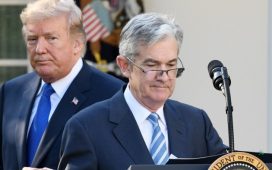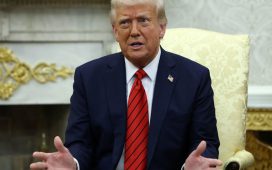Receive free US foreign policy updates
We’ll send you a myFT Daily Digest email rounding up the latest US foreign policy news every morning.
The writer is a former US ambassador to the EU in the Clinton administration
A new transatlantic framework between the US and EU, comparable to Nato, is needed in order to address the challenges of the 21st century. Nato is currently performing indispensable service in supporting Ukraine against Russian aggression, as it did in the 1990s in ending the wars in Bosnia and Kosovo. But the alliance is consuming all the attention of leaders on both sides of the Atlantic at a time when we face issues that go beyond its mandate. Military security, economic security and prosperity are intertwined and must be co-ordinated, not kept in separate silos.
Consider the challenges we face: the rise of China; the existential threat of climate change; securing fragile supply chains and critical minerals; transformational technologies like artificial intelligence; looming nuclear threats from Iran and North Korea; and the task of rebuilding Ukraine. All of these demand greater US-EU co-operation than ever before.
Precedents for building this new relationship are plentiful: the 1990 Transatlantic Declaration under President George HW Bush; the 1995 New Transatlantic Agenda under Bill Clinton (which I helped negotiate); and the 2021 announcement of a “renewed Transatlantic partnership” that created the joint Trade and Technology Council, which is doing important work in a number of areas. More recently, the US and EU have worked closely together to impose on Russia the stiffest economic sanctions ever. Vladimir Putin’s efforts to break the transatlantic relationship have failed.
The US is the EU’s largest bilateral trade and investment partner. A third of transatlantic trade consists of intra-company transfers. And the percentage of investment in each other’s markets accounts for more than 30 per cent of total global investment. American companies invest more than three times as much in Ireland as they do in China.
But more is needed. While attendance by American presidents and European heads of state at Nato summits is automatic, summit meetings between US and EU leaders are sporadic at best. There is no common vision for the future and we each go our own ways on important initiatives without advance consultation with governments and businesses on the other side of the Atlantic.
In the past few weeks, with no US input, the European parliament adopted a sweeping law regulating AI, while the White House focused on a voluntary approach, with Congress yet to formally address the issue. Last year, Congress passed the Inflation Reduction Act to provide over $360bn in subsidies and tax incentives to US-based companies to encourage clean technologies, in effect excluding European ones.
With the COP28 summit approaching, the US and EU have starkly different approaches to climate change. Europe recently approved a carbon border adjustment mechanism to tax carbon intensive imports from the US and elsewhere, and has a cap and trade system, which America has rejected.
This autumn’s EU-US Summit should be the occasion for weatherproofing the transatlantic relationship against the political turbulence that lies ahead. Here are six steps that should be taken.
First, the increasingly important role that the EU plays in the security area should be recognised. Second, mechanisms should be developed, including a transatlantic impact statement, that would prevent surprises caused by the promulgation of laws without advance consultation across the Atlantic.
Third, we should further integrate our economies by negotiating a reformulated transatlantic free trade and investment initiative, with the goal of achieving a tariff-free transatlantic marketplace within 10 years, while protecting national environmental laws; lift restrictions on barriers to investment; integrate capital markets with mutually recognised accounting standards; and allow products to be mutually accepted with one set of tests in one market that satisfies both. This can create western rather than Chinese standards for products sold around the world.
Fourth, recreate the transatlantic private sector organisations from the 1995 New Transatlantic Agenda for business, labour, consumer and environmental groups. Fifth, build on the Transatlantic Legislators’ Dialogue to create a Transatlantic Assembly modelled on Nato’s North Atlantic Assembly. And finally, institute annual EU-US Summits.
These measures would build a stronger geopolitical and economic transatlantic partnership, supplementing our successful military alliance, ready to meet the global challenges of the 21st century.







